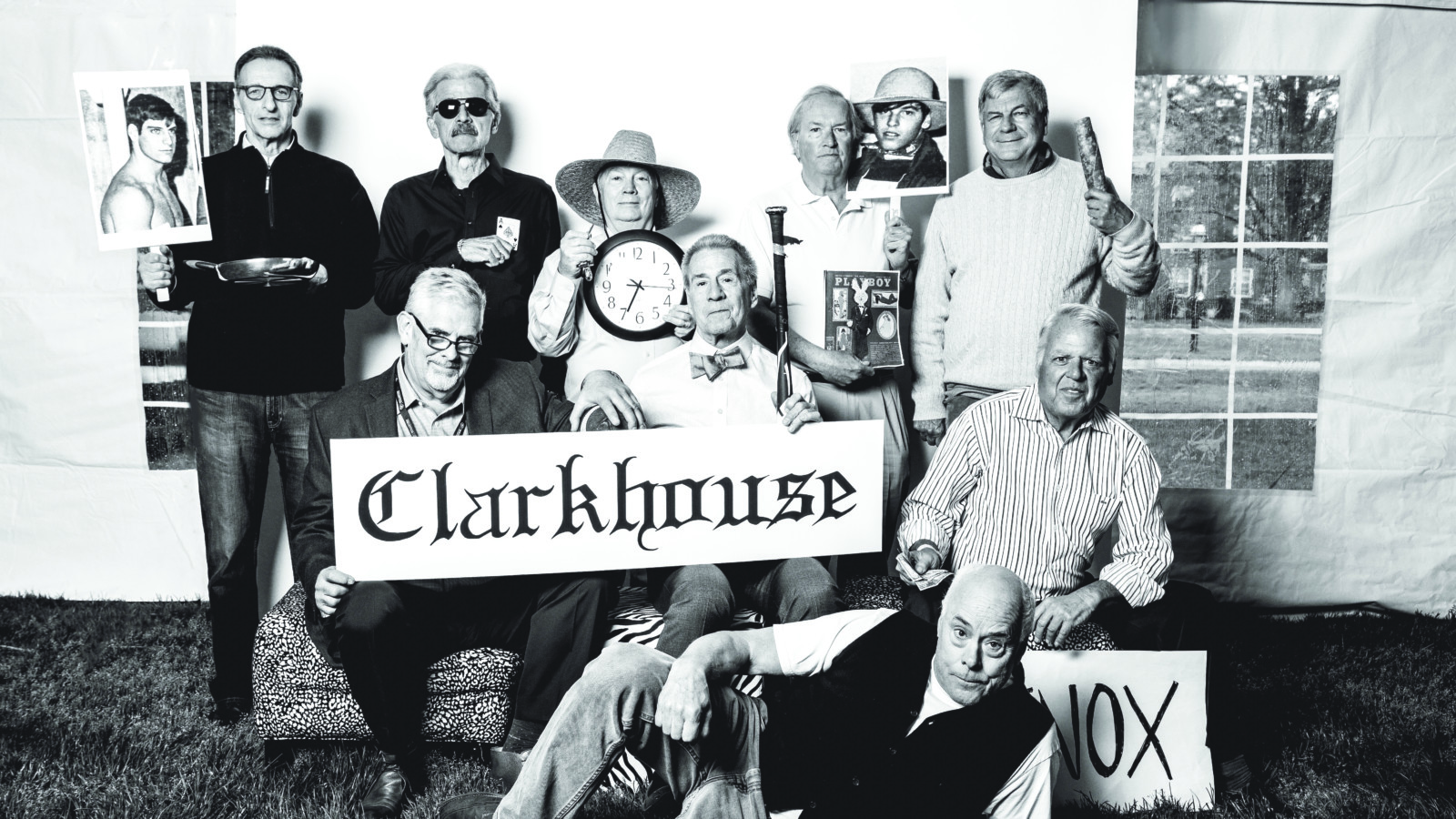How Planning and persistence—and the work of a phantom—helped the class of ’68 set a new bar for Reunion success
Ask Reunion Committee Chair Chip Keeney to explain why a record 44 percent of his class attended their 50th Reunion, and he notes that the class of 1968 is extremely tight-knit. “It wasn’t hard to get these guys back at all,” he says. “It was a logistical thing, but that’s nothing we couldn’t work out. It was so easy, and that’s what made it a pleasure.” But, clearly, the comprehensive outreach campaign waged by Keeney and his committee—Don Klock, Kent Haberle, Paul Wainwright, Jim Cain, and Mark Griggs—had more than a little to do with it. Here are three key strategies they employed.
Meet regularly
Formed at Reunion the year before, the committee scheduled regular conference calls every three weeks to update each other on their progress tracking down classmates. Each member had his assignments, based on classmates he knew, and had to answer to the group by the next meeting. Committee members became gumshoes. “Calling was always preferred, then emailing if they had one, then we looked on LinkedIn, Facebook, Internet searches, and then, lastly, if none of that stuff worked, we’d write an actual letter to their home,” notes Klock. “What made this successful is we bird-dogged this thing to everybody we could find.” To chart it all and keep tabs on loose ends, Wainwright created what he calls “the mother of all spreadsheets. Every fact known about the class is somewhere in it.”
Tap class talent
To ramp up the appeal of the event itself, the committee sought out members of the class to provide programming of particular interest—an exhibit of members’ art and photography curated by Wainwright, a talk by Will Buckley on lessons learned at Williston, even a presentation by Haberle, Chris McWilliams, and others on the mysterious Phantom, a figure responsible for a string of pranks on campus, including the legendary Crumpled Newspaper Caper (see below). That personal connection “helped pull people in,” notes Klock.
Get a room!
To solve the logistical challenge of finding hotel rooms in the area (on what turned out to be graduation weekend for a number of area colleges), the committee rented out the entire Autumn Inn in Northampton, which became a home base for roughly 50 members of the class. All of this organization and planning served to propel both Reunion attendance and the separate class fundraising effort led by Ted Babcock, which broke the previous school record for the size of a class gift ($302,000) and participation (82 percent). Notes Wainwright, “I know that, in my case, I was motivated to give more money than I ever have before to any organization. I just felt very strongly about what the school gave to me and wanted to give back.” The donations helped fund a newly renovated terrace outside Ford Hall. Already, it has become a much-beloved socializing place.
The Phantom Strikes Again
Did a shared history of pranks bring the class of 1968 together?
Prior to breaking Reunion records for participation and generosity, the class of 1968 was famous for more subversive acts, specifically for a series of pranks that still stand out for their audacity. At a Reunion talk, Chris McWilliams, Russ Creighton, Worth Durgin, Kent Haberle, and Paul Wainwright provided an insider’s look into the origin and history of the prankster known as the Phantom. What emerges is a rich irony: The Reunion success of the class of 1968 reflects a closeness that was born at least in part from the shared experience of rebellion.
In “A (Short) History of the Phantom,” a 15-page tell-all shared at Reunion, the authors note that their class came of age at a time of great social change, an era of questioning that called for an anti-establishment superhero. Pranks had a long tradition at Williston (who could forget the cow in the tower of the old gym in 1924?), but in keeping with the spirit of the sixties, the Phantom would be a collective. “One of the original goals of this group was to continue to include as many of the class of ’68 as possible,” the history explains. “It was the number of co-conspirators, the duration and imagination of the preparation, which created among all of the seniors the knowledge that The Phantom was somehow a part of all of them.” For Wainwright, who had to answer to Headmaster Phil Stevens for his role in the legendary Crumpled Newspaper Caper (when seniors filled the Ford Hall faculty waiting room with crumpled balls of the New York Times), it wasn’t just the pranks that built solidarity, it was the shared values underlying them. “We didn’t try to be destructive,” explains Wainwright, who went on to get his Ph.D. in physics from Yale. “We tried to be smart and clever. That’s basically where this cohesion came from.”
Return of the Clarkhouse Gang
In the spring of 1968, the seniors of Clark House (now Logan House) decided to capture their last days at Williston in a photograph, to be taken by their camera buff classmate Paul Wainwright. “We said, let’s all bring something or wear something so people would remember what we were about,” recalls Don Klock, one of the house’s 12 residents and a member of the 50th Reunion Committee. “Everybody got into it.” Indeed, they did. The props and costumes—from sports gear and hitchhiking signs, to homemade T-shirts and a Playboy magazine—were laden with insider meaning, so much so that the resulting photo, printed in a supplement to the yearbook, endured as a topic of conversation among the classmates for the next five decades. At Reunion, almost all of the Clarkhouse gang gathered to recreate the image. Two who were not there were remembered with photos. ”It was a hoot,” says Klock.
For more stories about Williston Northampton School alumni, click here.

